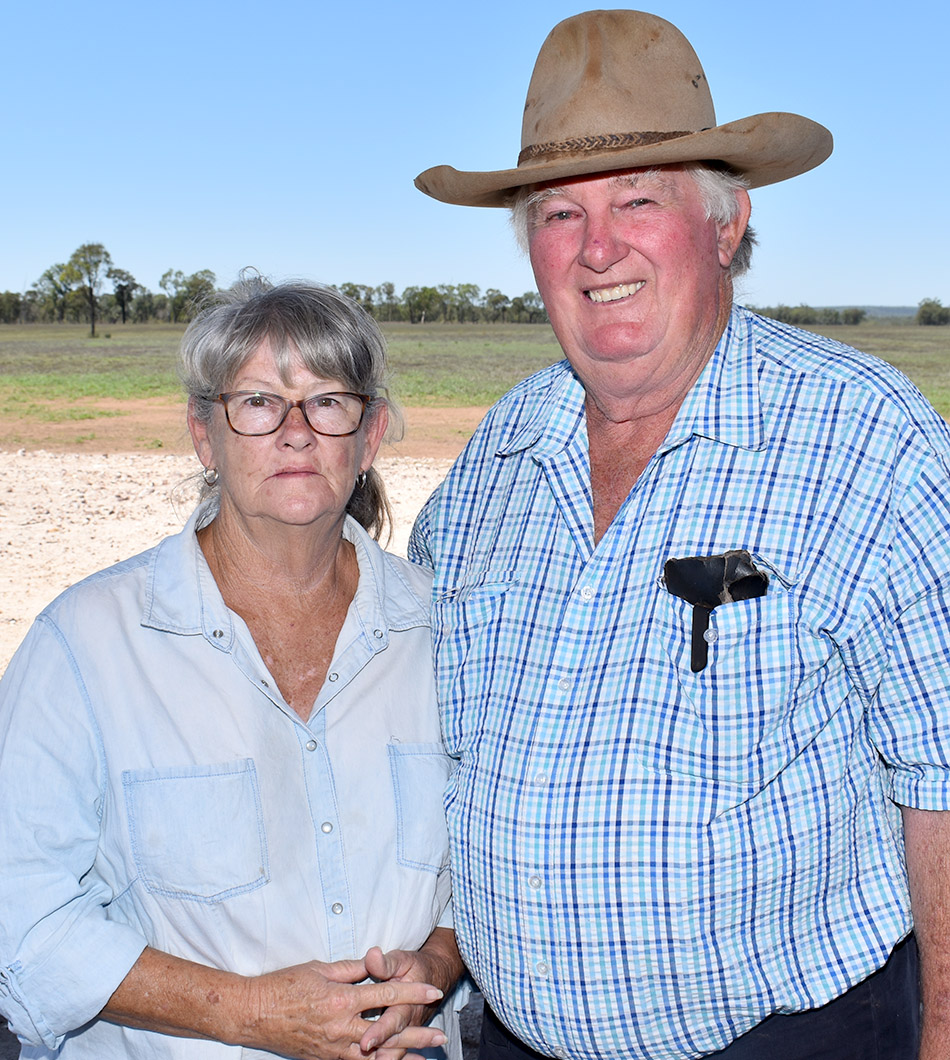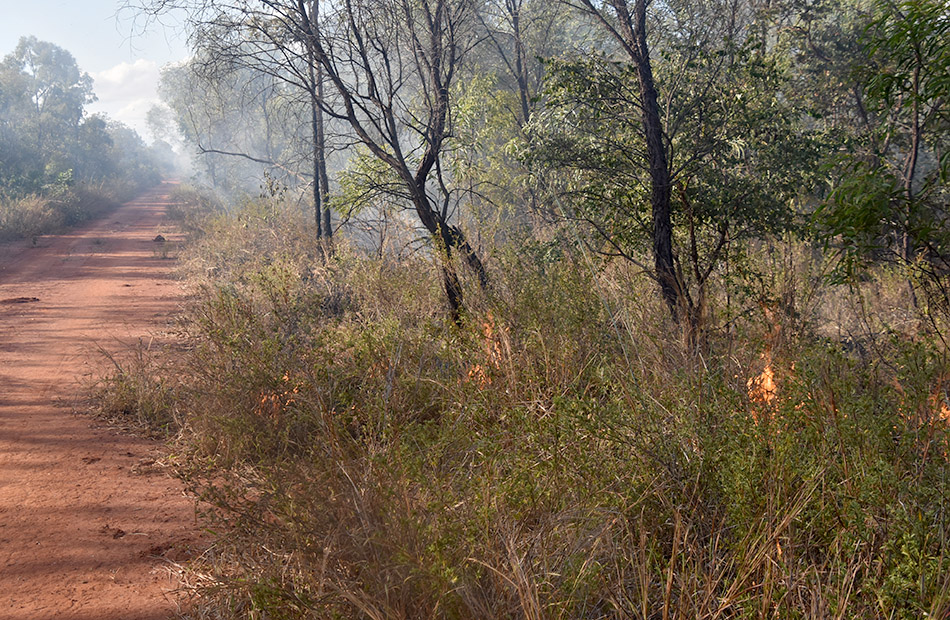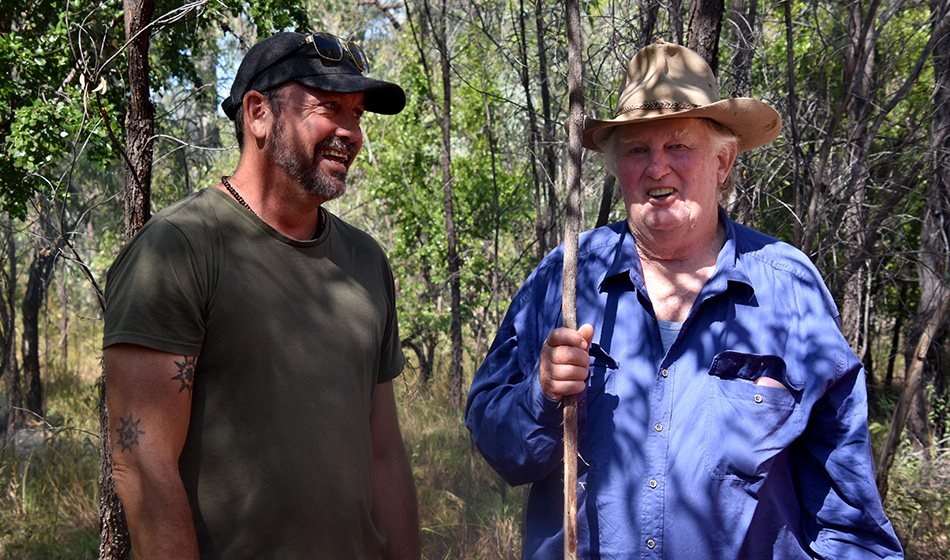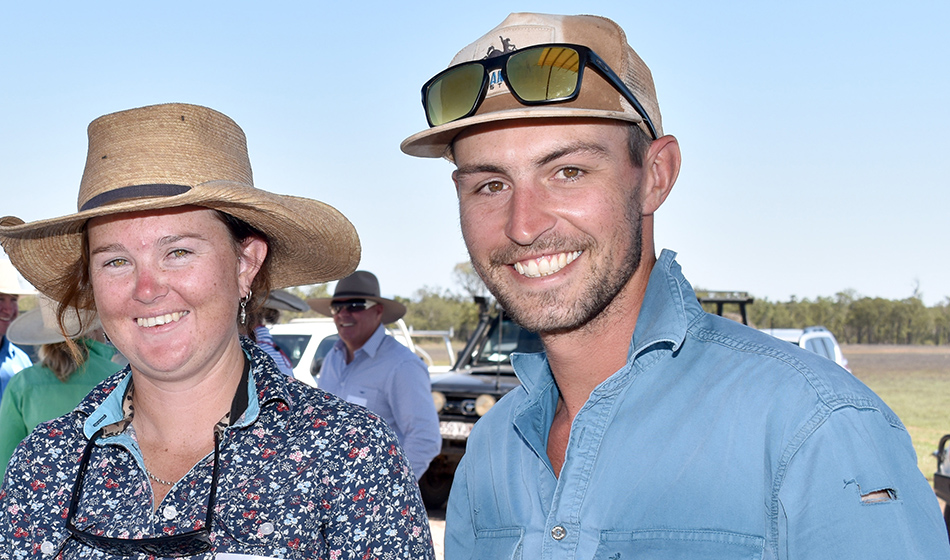Everything’s connected… and balance is crucial

The track through the softwood scrub patch on Jervoise Station slated for an upgrade to improve access… and management.
Jervoise Station grazier Kerry Jonsson is keen to fight a fire.
It’s in an unproductive patch of softwood scrub in a remote part of the property that’s difficult to access. The fire hasn’t started yet, but she knows doing nothing means it will happen.
The patch in question is a 100ha vine thicket community or softwood scrub in a relatively inaccessible part of their 27,000ha property.
She and husband Greg who own the property now managed by their granddaughter Ashton and husband Elliott Smith, have always shied away from fire as a management tool.
“We had always thought fire was destructive and we tried to avoid it,” Kerry said.
But that changed when Victor Steffensen from the Firesticks Alliance brushed aside the ashes of a cool burn to reveal bright green shoots of grass, untouched by the fire that had swept through the paddock moments before.
“It was a lightbulb moment for me,” Kerry said.
“Victor looked at our country and said there were at least five species of grass missing from the landscape. With proper management, they would have still been there.”
Kerry admitted she had been sceptical about that right up until her “aha” moment in the wake of Victor’s fire.
“That was when everything fell into place for me,” Kerry said.
She also realised a comment she had previously dismissed about there being “too many wallabies and not enough dingoes” made to her by NQ Dry Tropics Cultural Fire Management Project Officer Trinity Georgetown was spot on.
Getting involved with NQ Dry Tropics’ Linking Landholders to Frontage Country project to get advice and support as to how best to protect the vulnerable 13 Mile scrub at the end of a rough 27km property track was a “no-brainer”.
The Jonssons have always been conscious of the need to work with, rather than against, nature. It was the experience of seeing nature solve her own problems that led them to go organic in 1979, a long time before it was a fashionable thing to do. Kerry believes everything in nature is connected to everything else.
“When it’s working well, everything is in balance,” she said.
“When we interfere by trying to improve things, that’s often when we upset the balance and there are consequences.”
So, when SLR Consulting ecologist Rhiannon Williams, commissioned to determine the ecological value of the thicket, got excited about it being essential habitat for migratory bird species, the Jonssons were avid listeners.
The vine thicket community provides essential habitat for migratory birds like the fork-tailed swift (Apus pacificus) and the white-throated needletail (Hirundapus caudacutus), and possibly the oriental cuckoo (Cuculus optatus) and rufous fantail (Rhipidura rufifrons).
Ms Williams proposed a management plan to remove the weeds presenting the biggest wildfire threat to the thicket, a permanent firebreak and an ongoing management plan including regular grazing.
The threats are three-fold — lantana throughout the scrub, a collar of tall grass and a neighbouring emergent lancewood forest, with long, rapidly drying grass as the understorey — but they all invite a common enemy: wildfire.
The weeds will need to be removed mechanically, a firebreak established, the lancewood thinned and the long grass controlled.
The vine thicket grows no grass (no sunlight reaches the ground within it) so it’s not of any direct practical use to the Jonssons’ enterprise. The only thing cows in their breeder herd can use it for is to hide whenever there’s a muster.
But everything is connected, balance is crucial. And they have seen firsthand the devastating effect of a 2019 fire on the 40 Mile vine thicket near their property.
Kerry said with improved access the area, they wanted to use the 13 Mile paddock to graze the breeder herd.
They would assess any problems at mustering time against the cost of fencing. Excluding cattle from the vine thicket may prove necessary, but hopefully good working dogs, or possibly a drone, might solve the problem.
The Connecting Landholders to their Frontage Country will help fund renovation of the 27kms track that provides access to the 13 Mile Scrub.
The track runs right through the vine thicket allowing for easy monitoring and opening up the area around the thicket for a planned grazing regime.
Because Jervoise Station is a certified organic operation, chemical-spraying of weeds is not an option.
The refurbished track will allow the necessary machinery to access the area around the vine thicket to mechnically remove the bulk of the weeds and to construct a firebreak.
Once that’s done, the track will make monitoring of the area and grazing management more practical.

Jervoise Station graziers Kerry and Greg Jonsson.

A “cool” burn set by Victor Steffenson from Firesticks Alliance at a Jervoise Station workshop.

Victor Steffenson from Firesticks Alliance (left) with Jervoise Station grazier Greg Jonsson.

Jervoise Station managers Ashton (left) and Elliott Smith.
